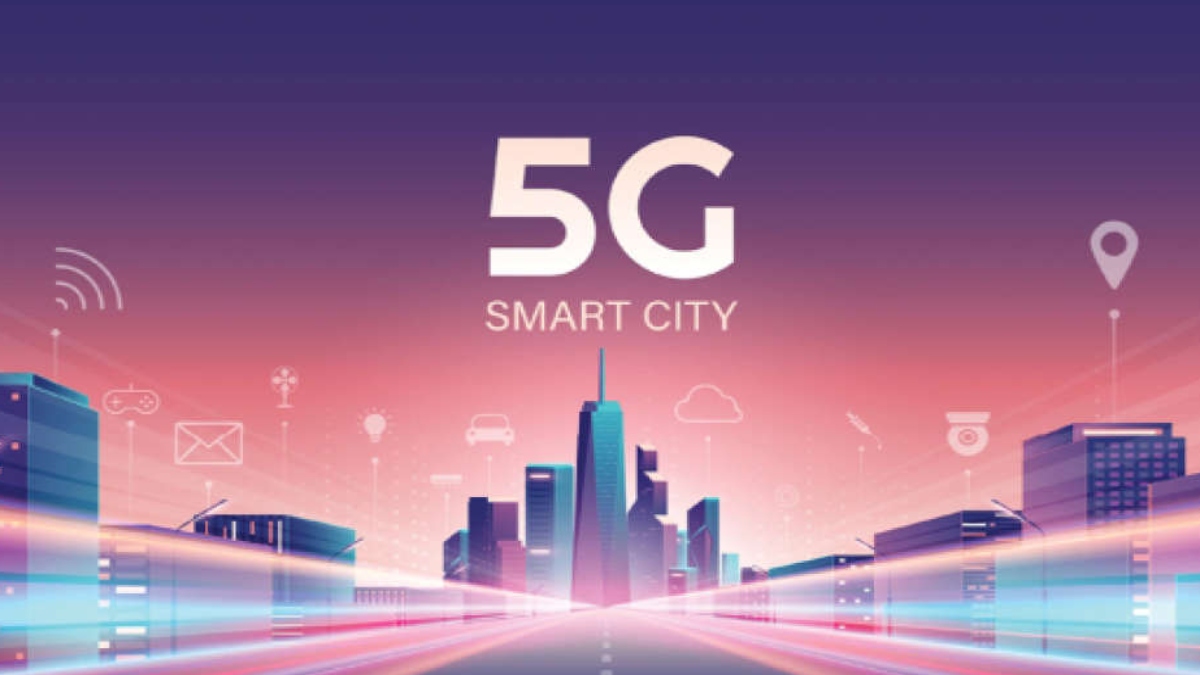On the surface, 5G appears to just be a natural evolution to 4G/LTE; a way to download movies faster to your next-generation smartphone. While that is true, the real promise of 5G is much grander and will revolutionize the B2B space. 5G possesses some unique technical and business attributes that allow its potential impact to be truly massive. 5G has many attributes such as faster data rate, lower end-to-end latency, high reliability, support for a large number of IoT devices, network slicing and energy efficiency. The combination of these technical and business attributes will unleash a large number of B2B applications. ABI Research projects the B2B 5G economy to be $1.5T by 2030. STL Partners, a market research firm, predicts that industry verticals ranging from manufacturing, transportation & distribution, retail, healthcare, energy & extractives, construction, agriculture, and media, sports & entertainment will transform due to 5G.
EDGE COMPUTING
Edge computing is simply bringing cloud technologies physically closer to the end user, in order to cut latency, increase downstream bandwidth, reduce upstream bandwidth, or for compliance reasons. Edge applications range from AR/VR, 360° video, cloud gaming, ad insertion, AI/ML inference engines, CDN, drone control, robot control, IoT, edge analytics, and more. Chetan Sharma Consulting predicts that edge computing will grow to a $4.1T economy by 2030 as numerous applications start to be hosted on the edge. As compared to the cloud economy, this represents a 4x faster growth. Edge computing is independent of 5G, but there is a strong tie-in between them. Since 5G is software-driven, the radio area network (or RAN) components need an edge to run on.
In other words, 5G, by definition, requires edge computing. This enables the telcos to deploy services at a much faster rate and provides the agility needed to compete. Edge computing provides a way for quicker analysis and response times using automation tools, acting on the local data. With the advent of 5G, all network/telco services will run similar to cloud-based services, benefiting from the agility of deployment, scalability and so on. This is essential for digital transformation. Edge computing refers to moving the computing to the network or cloud edge, closer to where the data is generated. This is as opposed to cloud computing where the data is moved to the central data centers.
BENEFITS OF EDGE COMPUTING
Wireless Connectivity – Environments such as factories have largely relied on wired technologies to get the appropriate network reliability, predictability, and latency characteristics. Wired networking technologies are expensive to install, require real estate, and need maintenance. Private 5G has the potential to replace wired technologies in these sensitive environments. Moreover, environments such as farms, oil fields, and mines may not even have connectivity to begin with since they are not well suited to wired technologies. Such environments can take advantage of Private 5G for solid networking connectivity.
Opex Savings – The next compelling benefit of 5G+edge computing is the promise to save operating expenses (OPEX). For a factory, this could be via robotics control, autonomous vehicles, AI/ML quality inspection, IoT management, and more. For hospitals, it could be through radiology anomaly detection at the edge. For precision agriculture, it could be via drone control and IoT management. Video surveillance applications could be used for retail store security to slash costs. Smart building applications could cut energy costs and optimize space utilization with 5G+edge.
New Revenue Streams – Depending on the industry, 5G+edge computing could bring in new streams of revenue. Areas such as sports, media & entertainment, education/training, and communication platforms could see increased revenue through applications such as CDN, AR/VR, tailored ad-insertion, 360° video, cloud gaming, and others. Stadium edge trials have shown higher engagement levels via edge applications that let attendees view the game from a large number of camera angles—which translates to more stadium-goers.
Customer Well-Being – Even if a particular application does not directly generate new revenue, it could boost customer well-being and satisfaction. VR pain or autism management edge applications have shown great promise in treating patients. A 2017 study published in JMIR Mental Health showed patients using VR reported a 24% drop in pain scores. A voice recognition edge application in a store answering common questions, such as the location of an item or a smart mirror allowing virtual clothing “try out,” will significantly boost customer satisfaction.
RISE OF EDGE AND CLOUD COMPUTING TECHNOLOGIES
According to a recent survey conducted by Automation World’s 2021 Cloud & Edge, 62 percent of businesses are presently utilizing cloud technologies as part of their digital transformation roadmaps, up from 51 percent in 2019. Edge and Cloud computing technologies, as well as their adoption, have increased since the pre-pandemic research: Edge computing deployments increased to 55 percent of responding companies, up from 43 percent in the previous survey, and Cloud computing deployments increased to a quarter of companies surveyed, up from 20% in 2019.
THE IMPACT ON THE DIGITAL TRANSFORMATION
While the global pandemic accelerated digital transformation across the board, it helped in the increased use of edge computing to accommodate remote management applications. In recent times, many industry players have stepped up their use of cloud technologies throughout the pandemic to deliver anywhere, any-time access along with real-time monitoring capabilities for critical automation systems, when many had to limit the number of personnel physically allowed on site. Industry players are not choosing between cloud and edge computing paradigms. They are using cloud and edge technologies according to their business requirements and business cases and are ultimately leveraging the paradigms as complementary.
To achieve the success of these technologies, start with small pilot projects do not just focus on collecting data from your assets. The real advantage comes with knowing what you want to achieve, targeting the correct and specific data, and then putting it to work across the edge-to-cloud landscape. Now we have tons of data but we do not know how to leverage it to drive real intelligence. We need to get access to the right data to solve business problems. By combining the data-gathering potential of edge computing with the storage capacity and processing power of cloud computing technologies.
SUMMARY
The future of network infrastructure is unlikely to be found solely on the edge or in the cloud, but rather somewhere in between. As companies seek to transform and become more effective at incorporating these two models, they need to find new ways to get the most out of their respective advantages and use them to overcome their weaknesses. The Telcos need to invest in 5G technologies upfront, to reap the benefits of providing a much wider variety of services to customers, at a faster rate.
In addition to the benefits to the end-users (e.g. higher bandwidth, lower latency to the mobile users), this also enables Telcos to offer private 5G to Enterprises, which opens up many more avenues for revenues, and at the same time, helping the verticals such as Industry 4.0, Precision Agriculture and so on. This is a tremendous opportunity for the Telcos to offer a range of services that were not possible with earlier generations of technology.
The Author is the Co-Founder & SVP of Aarna Networks which is a leading Startup Software Company with a mission to create an orchestration, management, and automation platform for private 5G networks and edge computing applications.





















